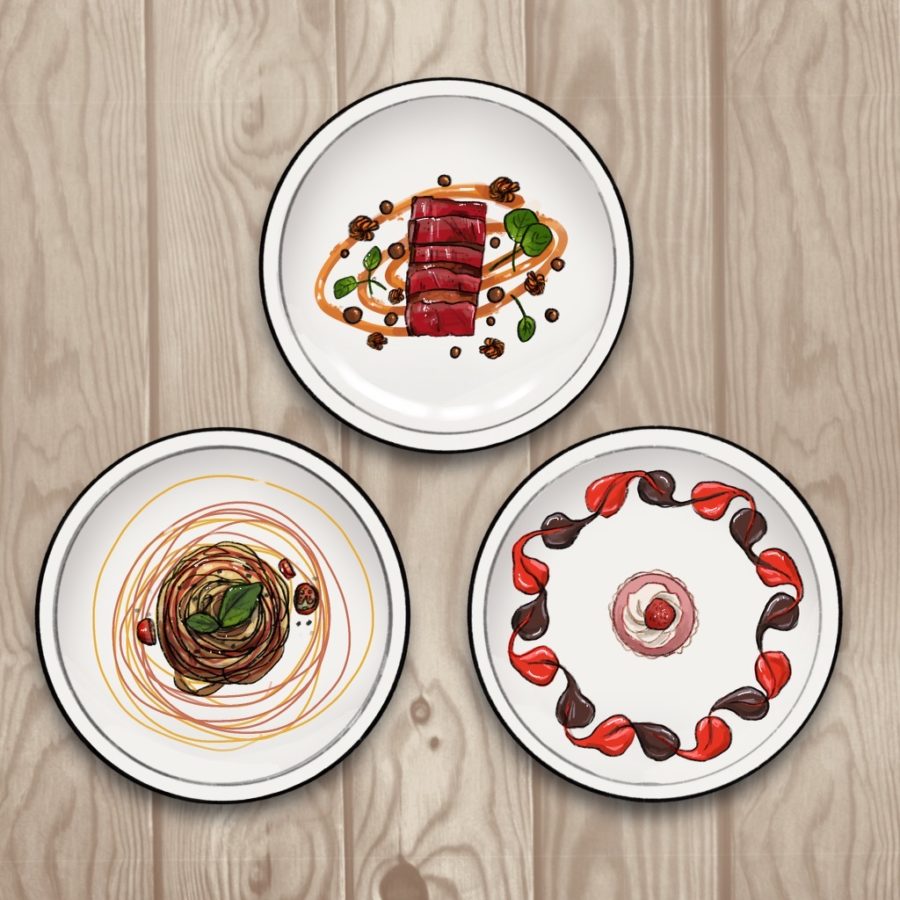Cooking up art with food and science
Molecular gastronomy can produce stunning plates of food that look as great as they taste.
February 2, 2023
Molecular gastronomy is a branch of food science that focuses on the physical and chemical processes that arise when cooking. But what exactly does that mean?
The name itself sounds confusing, but some techniques may sound familiar. There are many, but included in this article are just some of the more common techniques utilized in molecular gastronomy.
Emulsification is the process of creating foams or “airs” that dissolve in the mouth. This is done by incorporating emulsification agents like soy lecithin while whisking to create air bubbles. This process is used to create products like chocolate, milk, and butter. Examples of these used in dishes include balsamic foam paired with mozzarella and tomatoes and topping a cocktail off with some citrus “air.”
Those who have tried bubble tea or frozen yogurt may have encountered a topping called “popping boba.” This popular topping is created through spherification. This is the process of creating spheres from liquids or purees, which is done by mixing the liquids with sodium alginate and bathing them in a cold water solution with calcium chloride.
Another common technique is gelification, where gelling agents such as gelatin, agar-agar, and carrageenan are used to turn liquids into gels. Through this process, one can make jelly-like noodles to include in a dessert. For example, a dessert may be topped off with some mango noodles for a finishing touch.
Also known as low-temperature, long-time cooking, sous vide is a method of cooking in which food is placed in a water bath for extended periods of time at a specific maintained temperature. The intent of this method is to cook the food evenly by cooking it slowly and at a steady temperature. This helps the food to retain its moisture. Common foods cooked sous vide are meat and eggs.
This technique of molecular gastronomy is unique because it requires that the elements of a dish are broken down. These distinct elements are then used creatively to reconstruct the plating and presentation of the dish. Chefs say these types of dishes allow diners to “eat food in their own way while letting the individual flavors of delicious components come through.”
Pay attention to these methods the next time you step foot into a frozen yogurt shop or fancy restaurant!



